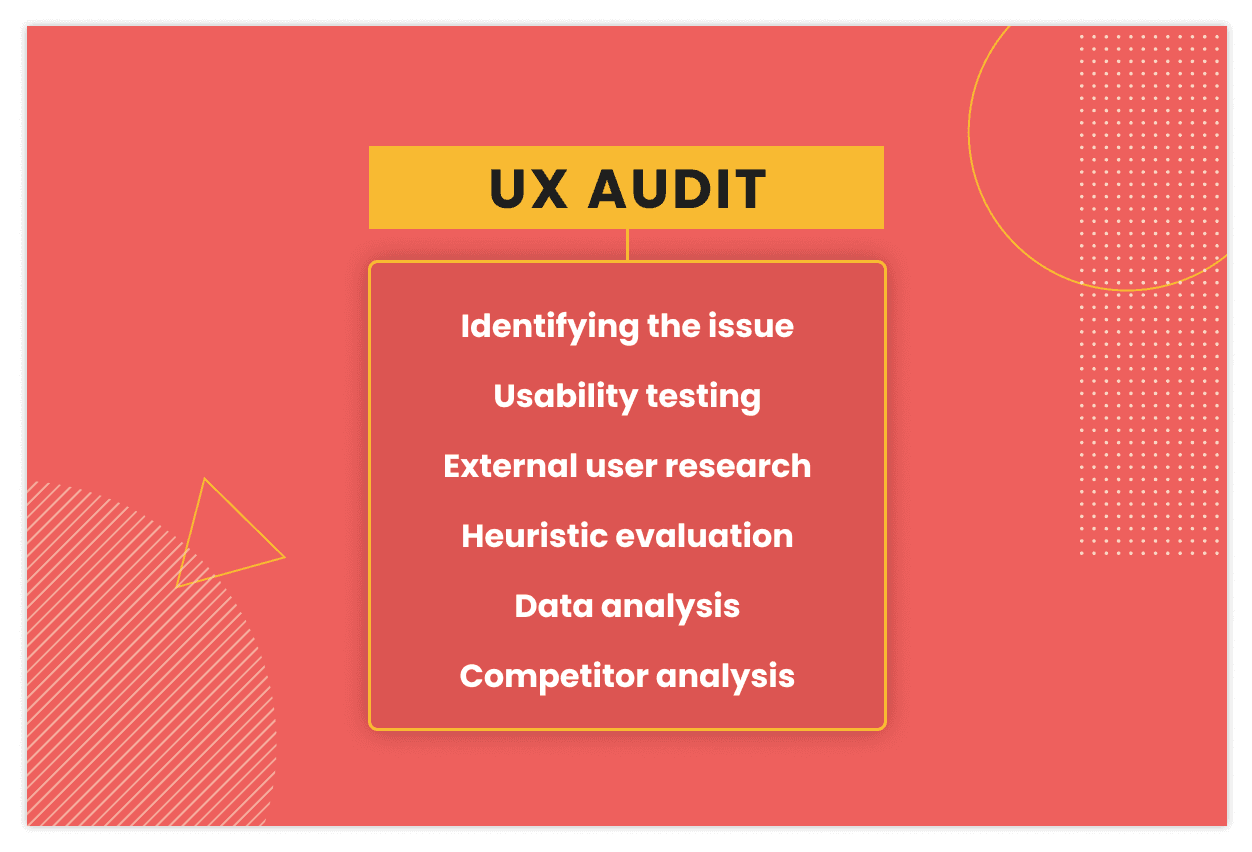Why a UX Audit Is Key to Purposeful Innovation
UI/UX Design
User Research
Why you need UX audits
Digital products need to understand their users – otherwise, they’ll fail faster than you can imagine. Nowhere is this more obvious than in the mobile app industry, where just 0.5% of consumer apps succeed. Even with a more focused audience and a niche use case, only 13% of B2B apps succeed.

One of the key reasons these apps crash and burn is that they fail to meet user needs and expectations. In a competitive world where digital technology is easier than ever to access, install and delete on a whim. You are constantly competing for your user’s attention. To win attention, most businesses push for innovation. But you can’t innovate without understanding users – something businesses forget all too often. Without context, striving for innovation can even damage your product. Consider famous examples of successful apps like Instagram, which even in 2022 is still releasing updates that attract huge amounts of negativity – solely because the company wants to emulate competitors. In 2022, Instagram’s decision to prioritise videos in user feeds has led to countless complaints online. While this update was technically an ‘innovation’ - in that it changed an existing way of doing things. It fundamentally changed the way users interact with the product without ever taking user opinions into account. So, whether you have an existing product or want to launch a new one, how do you positively plan innovation? It all comes back to user experience and can be specifically mapped as an output of your UX audits.
What is a UX audit and how can it help you innovate?
A UX audit looks at a product’s useability and performance solely in light of real users and their needs. It should assess every part of the product, from its navigation, functionality and features to its broader branding and tone. Audits come in different forms but can be loosely broken down as follows:
Identifying the issue
Usability testing
External user research
Heuristic evaluation
Data analysis
Competitor analysis
Identifying the issue
Establishing the actual reason you need innovation means identifying why the UX audit is happening. That means outlining both top-level business reasons such as failing to meet revenue targets, as well as describing broad user-level problems such as ‘the checkout process has a high abandonment rate.’
Usability testing
When performing a UX audit, failing to incorporate actual users into your process will lead to designer bias. Usability testing involves taking genuine users through your product and evaluating their experiences – typically by testing each feature in different user groups.
External user research
Whether you’ve already performed user research before launch or you’re still catching up, any new UX audit should involve a new round of testing. Surveys and interviews are a good way to assess your product’s UX, putting it in the hands of users to gather genuine, emotive feedback. Read this article on the top 12 must-know user research techniques to get a better idea of where to get started with user research.
Heuristic evaluation
This involves assessing your product against the set ‘rule of thumb’ aspects of good UX design. The most common Usability Heuristics teams use are from Nielsen. However, it’s worth noting that this is a good example of why innovation can stall – if you’re only trying to ‘tick a box’ to meet these criteria, are you really innovating for your users? We would encourage you to combine useability heuristics with empathy factors, considering your product’s features in light of both best practices and what your users want (which you have established through research).
Data analysis
when a product is live, it has the added benefit of providing useful data. The level of data you’ll have access to depends on what forms of data capture you’ve used but can be anything from basic details such as your user demographics to heat mapping that shows which parts of your app perform best.
Competitor analysis:
Part of your UX audit should also include an assessment of your competitor’s products – specifically in how they work from a user perspective: how do they handle navigation? How complicated is the conversion process? Etc. The result of your UX audit will show you the areas in which you’re failing to meet user needs. Some innovations may be easier to identify than others. For example, if you’ve spotted a useful competitor feature you know your users will appreciate, you can then build a better version and be fairly confident in its success.

Prioritise after audits or lose out on profits
Most importantly, however, is the idea of priority. We’ve talked about priority = profit in another recent article and it’s important enough to repeat here. The outputs of any UX audit must be clearly outlined and then prioritised according to the effort they’ll take to achieve versus the impact they’ll have on users. The most valuable innovations are those that effectively serve your user’s needs and habits – so they should be at the top of your list.

Got an idea? Let us know.
Discover how Komodo Digital can turn your concept into reality. Contact us today to explore the possibilities and unleash the potential of your idea.

Sign up to our newsletter
Be the first to hear about our events, industry insights and what’s going on at Komodo. We promise we’ll respect your inbox and only send you stuff we’d actually read ourselves.






